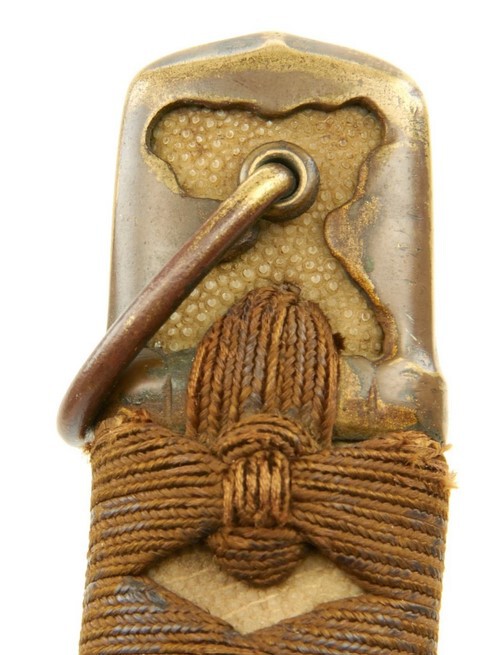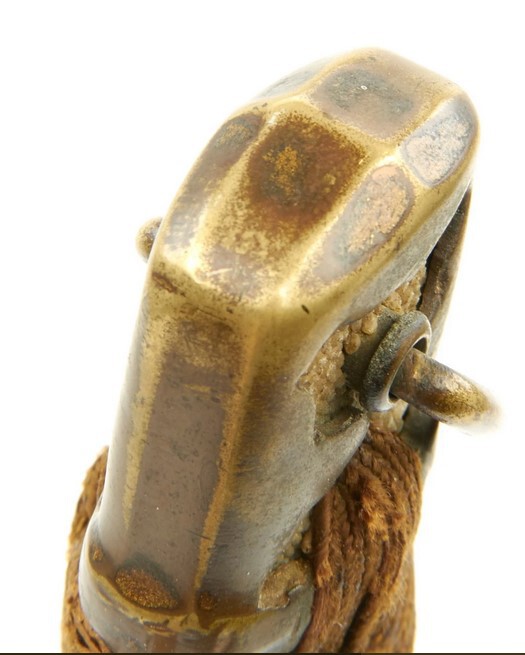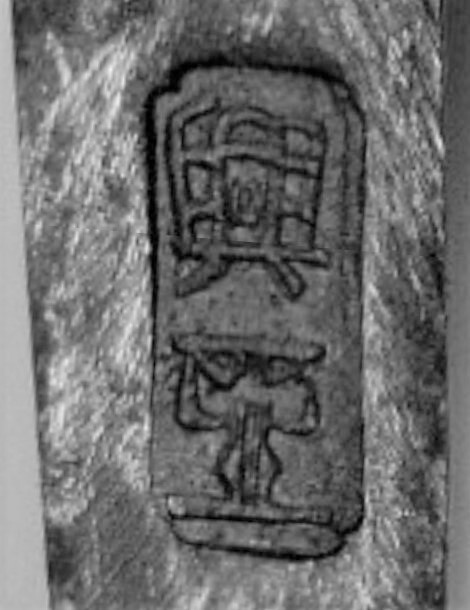-
Posts
10,882 -
Joined
-
Last visited
-
Days Won
128
Content Type
Profiles
Forums
Events
Store
Downloads
Gallery
Everything posted by Bruce Pennington
-
-

Can you help me identify these swords?
Bruce Pennington replied to Okan's topic in Military Swords of Japan
1. Type 98 IJA 2. Type 97 IJN 3. Type 97 IJN W/ custom saya 4. Civil sword possibly used in WWII 5. Rinji seishiki (Contingency model) IJA 6. Type 19 Army dress saber 7. Kyu gunto 2nd Photo L to R 8. Postwar Toyokawa/Army PX Souvenir 9. Possible Chinese fake; or low quality Type 98 10. Type 19 Navy dress saber -

I think this is a WW2 Era Gunto
Bruce Pennington replied to UZJ100's topic in Military Swords of Japan
I misunderstood your statement at the beginning about the fit. I thought it was all too loose when assembled. But you're saying you can't get the tsuka on far enough to line the holes up, right? So, is the limit at the fuchi? In other words, when fully installed is the handle and fuchi hard tight against the seppa and tsuba? if so, the wooden face of the tsuba could be shaved until the holes line up. But if the handle is as far as it will go onto the nakago, and the tsuba and seppa are a bit loose, then it's like John is saying - the end of the nakago is "hitting bottom" before the holes line up. I have a couple of gunto like this and they both have shortened mekugi, highly tapered and they go into the hole at an angle. Not ideal but it works. Something I'd try - put the handle on the nakago without the fuchi, seppa, and tsuba; just bare blade and handle. See if the handle goes on far enough to line the holes up. If so, the problem is at the face of the handle. If not, then the problem is inside where the end of the nakago hits the top end of the inside. -
John, Does your Kanehide have a star stamp or any other stamp? Is it dated? Thanks!
-

I think this is a WW2 Era Gunto
Bruce Pennington replied to UZJ100's topic in Military Swords of Japan
Drew, You have a WWII Type 98 Japanese Officer gunto, made in Aug 1943, by a smith named Kaneuji: Guys that really read these names may correct me on that! The small stamp near the top is the "Na" inspector stamp of the Nagoya Army Arsenal. Inspector stamps on officer swords indicated the blade was made in a non-traditional manner of one sort or another. Hopefully someone can translate your surrender tag for you. The cord wrapping is believed, by most, to be added by soldiers/sailors on ship as they headed home. The black paint is a number that matches the numbers stamped on the fittings - 526. The fittings are custom formed to each blade as each blade is different from the next. The numbers were used to keep the pieces together during the assembly process. Some of the seppa (spacers) around the tsuba (handguard) may have been lost over time. They can be replaces to tighten up the fit. I'm adding some of your pics to this for the future. Imgur photos often aren't there a few years down the road. -
Now I'm truly amazed!!! What other skills have you been hiding?
-
Ah. I keep forgetting that civil fittings had similar shapes (or I should say the WWII fittings reflected old shapes!). So the kabutogane is likely an original from it's civil days, right? In that case, the only item of interest is the very thin tsuba. Still, it's a good thread for future posts of similar fittings.
-
That's the first "K" numbered blade I've seen! At first glance, the blade seems mumei, but I think the corrosion build-up is thick enough to cover a mei. It would be tachi mei, but I've seen blades marked that way. Looks legit. The star is usually above the ana, but I've seen one with the star actually in the middle of the mei. So, there is some variation in location.
-
Came across this today (looking for something else!). Seems to be very late war Type 98 fittings. Peculiar because it's got a Showa-stamped Kanetsugu blade in it, which should put the manufacture date of the blade no later than 1942. Of course there is a known 1945 blade with a Showa stamp, so this could be another. It's not dated, so it could be either way. Back to the reason for the post. It's got the featureless metal fittings and very thin tsuba. There are many posts of these scattered all about the NMB, so I though I'd start a thread dedicated to the issue. Found HERE
-
Ha! I just had a thought - what if the nut is upside down? There is only one way to know..........
-

Show us your nice Gendai blades
Bruce Pennington replied to IJASWORDS's topic in Military Swords of Japan
Neil, Sorry for detracting from this thread with my questions, but I assume this Nagamitsu blade has no date since you didn't post a photo? Also, and @PNSSHOGUN and any Type3/Rinji collectors - do I recall a discussion that the high-quality Rinji Seishiki fittings like this are seen in the last couple years of the war? Would the high-quality fittings and the canvas same' push an estimated date for this blade into the '44-45 timeframe? But even as I type this, I realize the blade could have been made before 1942 and re-mounted in '44-45 fittings. But, then again, I may be wrong about the high-quality RS fittings being only late in the war. I'm trying to find blades made by RJT qualified smiths that aren't star-stamped to see if any are dated after 1942. The total lack of stamps is evidence the blade was traditionally made. But if the blade was made after 1942, by an RJT smith, and it's not stamped, then a case is being made that the Star stamp was used by RJT inspectors on RJT smith's blades that weren't traditionally made. So far, I have only found non-star blades by RJT smiths on undated blades. Which likely means they were made BEFORE 1942 and the RJT system. A dated blade after 1942, and no star, would be evidence for the counter idea about the star. But I haven't found any, and yours, if undated, continues to verify the current claims about star-stamped RJT blades being nihonto. -
The only one I have is on the nakago mune, but it is 2.75mm. It would be nice to get someone with the small stamp on the side of the nakago to get a measurement. I can't imagine that they are just as small, but maybe they are.
-
😘 OK, I’m following you.
-
Generally true, but I have seen a few, not many, but a few IJA gunto with black saya. And Ohmura shows one, although it's black lacquered rayskin. Here's one on THIS THREAD>
-
Must have been someone else. Before I found out that they make tool tips like this, I used this: I also think this nut has been broken or ground down. Clearly original to the war, though. When I first saw his post, on another forum, I only saw the black screw head and thought it was modern. Didn't realize they came in black. Learned something new!
-

Signature and date on tang (continued)
Bruce Pennington replied to Dan tsuba's topic in Translation Assistance
-
Incredible! This would be a great addition to the Large Shin Gunto thread.
-

Azuma Tamonbe Masashige (signed with Masastugu)
Bruce Pennington replied to Karusk's topic in Nihonto
Karusk, That happens the more you learn and build a good reputation over time by making positive contributions to interesting discussions. Guys get to know you. That is a reputation, not a count under your avatar. I made plenty of bozo mistakes as a rookie (and still do!), and have made the mistake of getting into arguments. There are a lot of gruff, opinionated guys here (just what you might expect from a bunch of guys that study war). Take things with a grain of salt. Give grace to those who disagree. State your case and leave it without any back-and-forth. Your reputation will stand on how you "carry" yourself. -

Help Identifying Sword...Real or Fake???
Bruce Pennington replied to Clifford's topic in Military Swords of Japan
I have found (after being tipped in that direction from someone) that acetone is a good test. Modern paint comes off with less rubbing than does the war era paint. In fact, the one time I tried removing the mottled-green, I gave up and used a dremmel wire brush. But with my late-war 95, with bad gold paint, it came off with the acetone. -

98 Gunto - Your thoughts and opinions
Bruce Pennington replied to Sodeska's topic in Military Swords of Japan
Best place for era guesses is the Nihonto forum. Take pics of the bare blade, full length. A measurement of the cutting length from the back notch to the blade tip. And the nakago shots too. -

Amahide called "Koa Isshin" by Buyee!!!
Bruce Pennington replied to Bruce Pennington's topic in Translation Assistance
Thanks guys! I bet the seller knew better, but wrote it up that way to avoid any hangups from local laws. Appreciate the help! -
These are sometimes faked, but the one you are posting is legit.
-
Good Morning guys! Here's a fun one! John @PNSSHOGUN sent me a link to a Buyee sale of a blade with the mei and date badly removed, but it still has the hotstamp. The sale page describes the blade as a "1945 Koa Isshin by Mantetsu" HA! I'm assuming they concluded that because the first kanji of the stamp is "Koa". But we know, thanks to @mecox the stamp is of the Koa Token Sha, "a company founded by a group of retired servicemen to support the war effort. It was the parent company of the Seki Nihon To Tan Ren Jo of which Amahide (Hideyoshi san) was president. Amahide was also running Tan Ren Jo as a commercial operation. [from Malcom Cox]" I have only seen the stamp on a couple of blades, but they were both Amahide blades. Here's the ad: https://buyee.jp/item/yahoo/auction/e504975921 What I'm curious about is the meaning of some writing placed by the stamp: I'll add some of the pics here for posterity, knowing the auction pages will someday go extinct:































